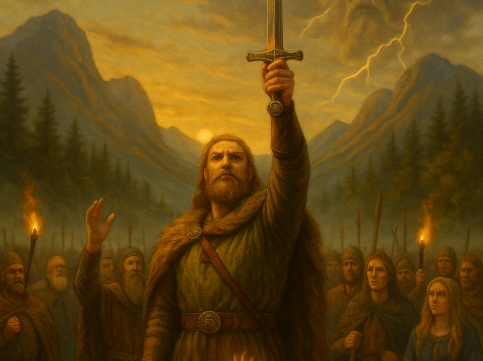
Viking Sword Names
Share
In this article, we delve into the fascinating world of Viking sword names, exploring their origins, significance, and the legendary tales that surround them. All of these names are not fantasy or new age reconstructions, but taken from the original most reliable medieval sources. At Norse Imports, we are passionate about preserving the rich history and craftsmanship of Viking weaponry and take all the steps nessesary to ensure historical accuracy in our content and sword replicas for sale.
Our collection features meticulously crafted replicas of legendary Viking swords, forged by master blacksmiths in the Czech Republic. These artisans create swords that meet the rigorous standards of HEMA and Buhurt fighters, ensuring both authenticity and durability.
[see our swords for sale here]
Real Viking Sword Names
Why Viking Swords Had Names
In Norse culture, naming a sword was more than a tradition, it was a testament to the weapon's significance. Named swords were often attributed with unique qualities, histories, and even personalities. In addition, the naming of the swords reflects the animistic beliefs of the culture and religion. Animism is simply the belief that all primitive cultures shared- that all things, not just humans, were believed to possess some sort of soul or spiritual essence. The naming of the swords shows that they thought of these weapons as animate objects with some sort of energy or personality.
Viking Sword Names in Mythology and Legend
Firstly, there are numerous swords from legend that have names. Although all of these these may not necessarily have been historical events and the swords may be symbolic of other elements, nevertheless, they reflect a naming tradition.
-
Angrvaðall (“Stream of Anguish”) – Wielded by the hero Frithiof in Frithiof’s Saga. A magical sword inscribed with runic letters that blaze bright in time of war and gleam faintly in peace.
-
Dáinsleif – The sword of King Högni in the legendary battle of the Hjaðningavíg. Forged by dwarves (named after the dwarf Dáin), this blade is cursed. Once drawn it must take a life before it can be sheathed, and any wound it inflicts never heals. In Norse accounts (Skáldskaparmál), Högni refuses peace because he has already unsheathed Dáin’s legacy, ensuring a perpetual blood feud.
- Freyr’s Sword – The unnamed sword of the god Freyr, first mentioned in the Poetic Edda (Skírnismál). It is a magical weapon that can fight on its own accord when wielded by a worthy owner. Freyr lent this sword to his messenger Skírnir in exchange for marriage to the giantess Gerðr, a decision that left Freyr weaponless at Ragnarök.
-
Gram – The legendary sword of the Völsung family, most notably used by the hero Sigurd in Völsunga saga. Originally thrust into a tree trunk by Odin, it could be pulled out only by Sigmund, Sigurd’s father. The sword was shattered in battle by Odin’s spear and later reforged by the dwarf-smith Regin for Sigurd, who used Gram to slay the dragon Fafnir. this blade is famed as the dragon-slayer sword in Norse legend.
-
Hǫfuð ("man-head")– The sword of the god Heimdallr. According to later accounts the hilt bore the face of a man. Though little detail is given in the Eddas, Hǫfuð is presumably the very sword he will wield in the final battle at Ragnarök.
-
Mistilteinn ("mistletoe")– A supernatural sword from the legendary Saga of Hrómundr Gripsson. Originally the weapon of a powerful draugr (undead/zombie) named Thráinn, it was taken by the hero Hrómundr after defeating that undead guardian. Mistilteinn “could never go blunt,” retaining a razor-sharp edge indefinitely. Its name means “mistletoe,” the same plant that slew Baldr, alluding to its deadly nature.
-
Skǫfnung – The legendary sword of the Danish king Hrólfr Kraki, celebrated in Hrólfs saga kraka and later Icelandic tales. Skofnung was renowned as “the best of all swords” in the North. It was said to be imbued with the spirits of Hrólfr Kraki’s twelve faithful berserkers, giving it a supernatural bite. Wounds made by Skǫfnung would not heal normally, unless touched by the Skǫfnung Stone kept with the sword.
-
Surtr’s Sword – The flaming sword wielded by Surtr, the fire giant king of Muspelheim in Norse myth. In the Poetic Edda and Snorri’s Edda, Surtr brandishes this bright blade during Ragnarök, using it to fight the gods. It is prophesied that Surtr’s fire-sword will engulf the world in flames and he uses it to slay the god Freyr and burn the earth as the old world ends.
- Tyrfing – A famous cursed sword from Hervarar saga ok Heiðreks. Forged by two dwarves under coercion by King Svafrlami, Tyrfing had a golden hilt and shone like fire when drawn. It was marvelously sharp and would never rust, never miss a stroke, and could cut through iron and stone as easily as cloth. However, the dwarves laid a curse on it: the sword would bring about three great evils and kill a man each time it was drawn similar to the sword Dáinsleif.
Historical Viking Sword Names
These are swords from real historical sagas about real kings and men who are confirmed to have lived. The naming of swords in these sources show that it was a real living tradition and not just legend.
-
Dragvandil – The sword of Egill Skallagrímsson, a 10th-century Icelandic warrior-poet, as recounted in Egil’s Saga. Egil’s blade, whose name has been interpreted as “Dragon Tail” or “Dragon Wand,” was an heirloom passed down from his ancestor Grim. This named sword illustrates the saga tradition of gifting and inheriting weapons.
-
Leggbít ("Legbiter") – The sword of King Magnus III “Barefoot” of Norway (reigned 1093–1103), mentioned in medieval histories and sagas. It earned its grisly name from its reputed ability to slice through legs in battle. According to the kings’ sagas, Magnus Barefoot wielded this weapon during his campaigns west over the sea. When Magnus was slain in an ambush in Ireland, “his sword, Legbiter, was retrieved and sent home” as a royal heirloom.
-
Kvernbít ("Quernbiter") – The sword of King Hákon the Good of Norway (10th century) as described in Snorri Sturluson’s Heimskringla. King Hákon received this sword from King Æthelstan of England. Quernbiter was said to be so sharp that it could cut through a quernstone (millstone) in one blow. In battle Hákon “took his sword Quernbiter with both hands, and hewed through an enemy's helm and head, cloving him to the shoulders”.
- Hneitir (“Striker”)– The sword of King Óláfr Haraldsson (Saint Olaf) of Norway, who died in 1030 at the Battle of Stiklestad. In the saga account of Stiklestad, St. Olaf wielded Hneitir to great effect: one swing of “the sword Hneitir cleaved the nose-guard on Þorgeir’s helmet and his skull beneath the eyes”, nearly shearing off the top of the man’s head. However, when Olaf later struck the pagan chieftain Þórir Hund, the blade could not bite through Þórir’s enchanted reindeer-hide armor. Olaf ultimately fell in battle, dropping Hneitir as he died. As a relic, “Olaf’s sword, called Hneitir, was kept in the church above his burial site” in later medieval tradition, underscoring its status as both a historical weapon and a sacred artifact in the St. Olaf legend.
Were All Viking Swords Named?
Not every Viking sword bore a name. Typically, only swords of significant importance due to their craftsmanship, the status of their owner, or their legendary deedswere named. It seems as though common warriors often wielded unnamed swords, although every man could have named his sword- it is just the kings and legendary swords that we hear of recorded in the sagas. Keep in mind that swords were expensive and reserved for the wealthy in general. Most warriors would have carried a spear or axe more often.
Viking Sword Replicas?
Check out our collection of Viking Sword replicas of archeological finds.
All of our swords are fully functional and blunted to withstand HEMA, Buhurt, Armored Combat training, sparring and competition.

